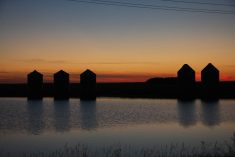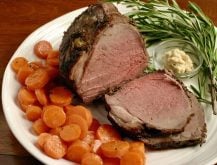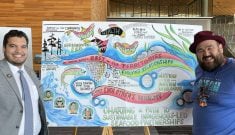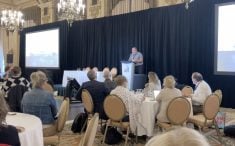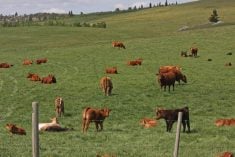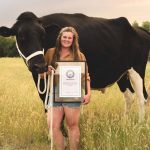Four simple words inscribed on a headstone were the catalyst for the book, Women Pioneers of Saskatchewan.
Celeste Rider, provincial librarian for the Saskatchewan Genealogical Society, was researching cemeteries in 2008 when she noticed the words, “in silence we remember.”
Rider wondered what the lives of this woman, who lived from 1882 to 1957, and other pioneer women must have been like.
She felt that if someone didn’t write about these generations of women, many details about the important role they played in the settlement and development of the province would be lost.
Read Also
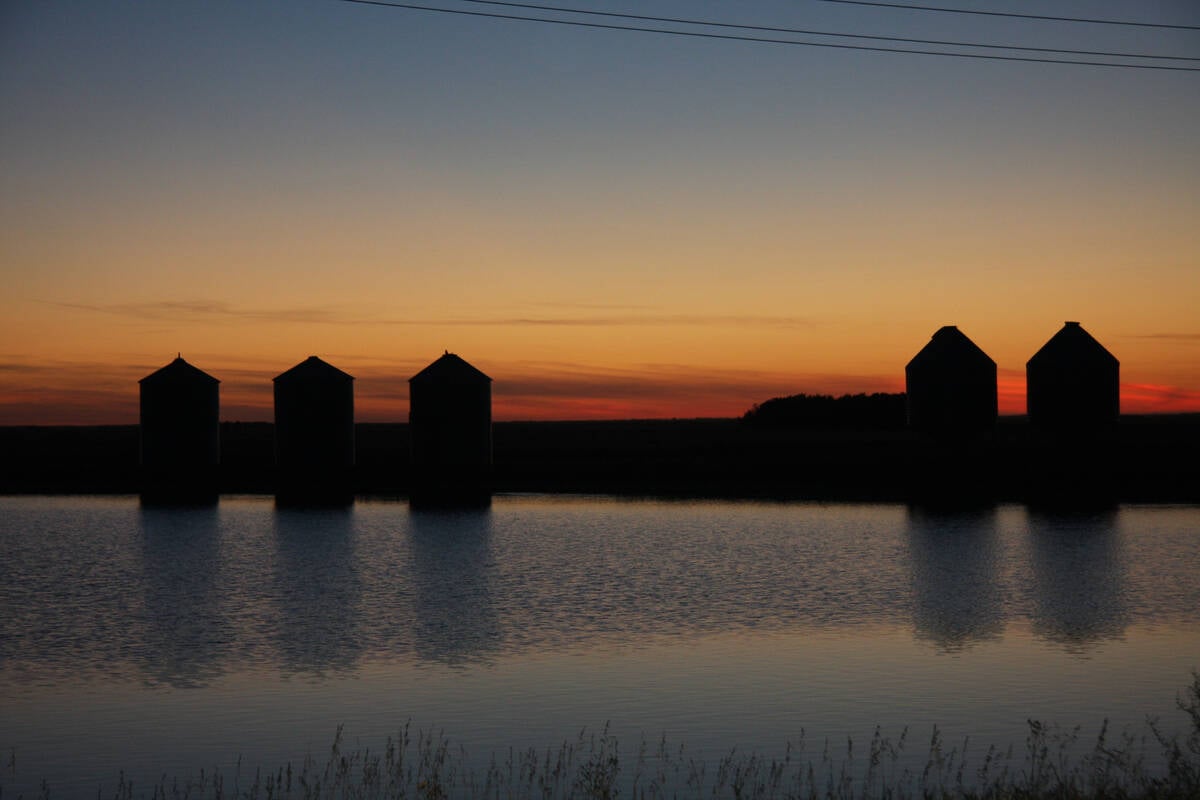
Know what costs are involved in keeping crops in the bin
When you’re looking at full bins and rising calf prices, the human reflex is to hold on and hope for more. That’s not a plan. It’s a bet. Storage has a price tag.
Rider met with Linda Dunsmore-Porter, SGS executive director, and suggested a book about the province’s women pioneers to commemorate the group’s 40th anniversary in 2009. She agreed and planning began. Within months, she received 413 stories celebrating the lives of women born from the 1800s until 1950. The stories and photos came from across Canada, with one sent from Australia.
All the women had resided in Saskatchewan and many had immigrated to Canada.
“The book exceeded all our expectations, both in the quantity of stories we received and also in the quality of writing,” Rider said. “Everybody had a unique way of telling the stories and some submitted first-hand accounts that their mothers or grandmothers had written years ago.”
Nellie Barber of Carnduff, Sask., wrote about her mother, Myrtle Alice (Watling) Wilmot. Born in 1890 in Illinois, she married Jack Wilmot in 1917 and lived near Carievale.
“Life was somewhat primitive on the prairies when they first arrived – no electricity, no running water, no automatic furnaces, no telephone,” Barber said. “It was the way life was then and they coped with it and came through triumphant to see better and easier times.”
Isabel (Woodland) Irvine married William Irvine in 1926 and moved to his homestead 30 kilometres southwest of Young. Her nurse’s training was well used as the community’s midwife.
“During this 10-year period after my arrival at the homestead, I delivered 30 babies without a doctor or anesthetic. This was during the Depression in the Thirties and I collected $10 to use for buying medical supplies,” said Irvine.
“Several of these mothers were from Europe and their lack of spoken English proved to be a big problem. There were also a few reported cases of scarlet fever and one of small pox. I would get serum from Watrous and do inoculations.
“On one of the trips Bill made to Young for diphtheria serum, it was -50. He had to carry the serum inside his clothing next to his skin to keep it from freezing.”
Michael and Theresa (Kancher) Sawka farmed near Dysart.
Beverley Anne Domm wrote that her grandmother was a tiny woman but shared the farm labour, milking cows morning and evening, feeding and watering stock and hauling water from a distant well.
She churned butter by hand to buy groceries, carried heavy milk pails to the separator to produce cream for sale and raised pigs and cattle to pay expenses. Sawka also painted their new barn and house.
Michael Sawka Jr. remembered his mother and father wading in stagnant slough water up to their hips as they stretched a line of barbed-wire fencing.
“I watched as my parents picked tons of stones on cold, windy spring days in preparation for seeding.”
They dug many holes in the rock-hard blue clay in search of water without ever discovering an adequate supply.
“I recall how Mother did practically all of the stooking, running from row to row in an effort to keep up with the binder, and usually succeeding.
“She told me that when I was too small to ride with Dad on the binder, she put me in a wooden box and dragged the box from one row to the next.”
Other writers told about the hardships and challenges their female ancestors had faced and good times at picnics, school concerts, sports days, fairs, dances and community events.
Rider said she was amazed by how much work farm women did. The men generally worked the land and seeded and harvested the crops, while the women looked after the family and household tasks.
Many women also milked the cows and tended to poultry, gardens and other chores. As the children grew, they helped their mothers with these jobs. Due to the success of the first book, the society decided to publish another volume. The deadline for submissions is May 31.
“I think it’s important to keep on telling the stories of women pioneers,” Rider said.
“It gives us a sense of our past and tells us what our mothers or grandmothers had to go through so that we could enjoy what we have today.”
For more information, contact: Celeste Rider, Saskatchewan Genealogical Society, Box 1894, Regina, SK, S4P 3E1 or sgslibrary@sasktel.net.


